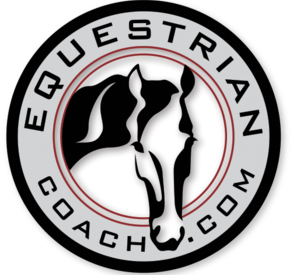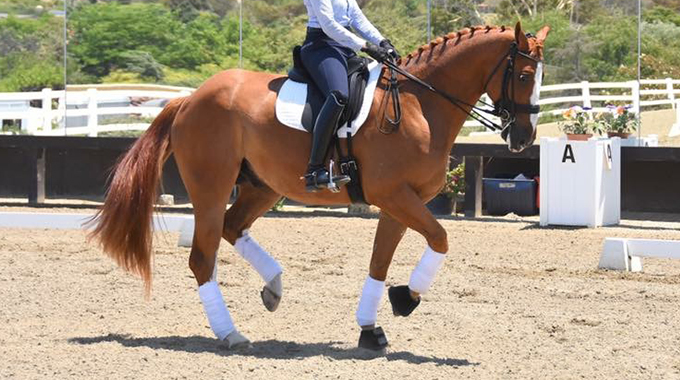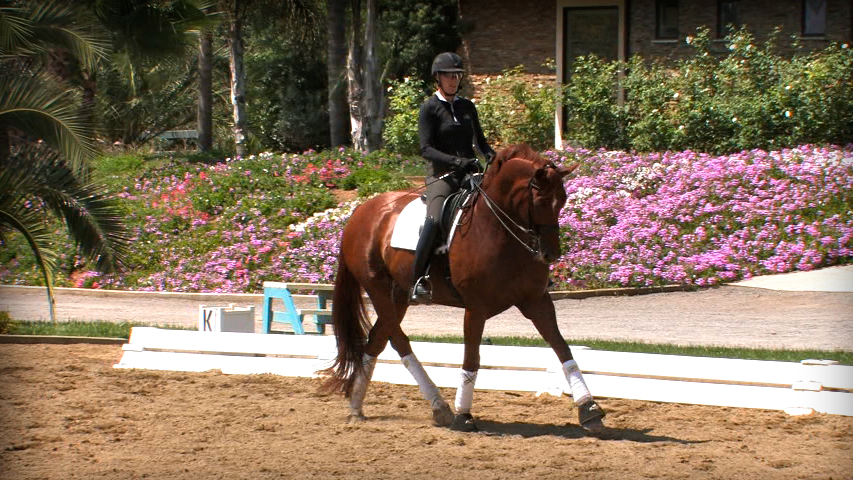Verena Mahin
- 10 Oct, 2017
- 0 Comments
- 2 Mins Read
Dressage: Good Hands and How To Achieve Them
Submitted by member: Riley
What are “correct dressage hands” and how do I get them?
Answer by Verena
There are several things to consider when talking about our hands. Let’s start with the basic positioning of them. Snaffle rein between the ring and pinky fingers, holding the most pressure on the rein between the thumb and index finger. Your middle, ring, and pinky should be a little looser to be able to supple the horse’s mouth effectively without having to move the hands too much. Your thumbs are on top—no sideways piano hands as this breaks the positioning of the straight line that we want to see from the elbow—through the wrist to the horse’s mouth.
It’s important to remember to have a soft moving arm, wrist, and hand. And even though the aim is a quiet hand, it’s critical to stay relaxed and supple in this endeavor. Since the hands are the direct link to the horse’s mouth, it’s important to keep the fingers moving and suppling all the time. A death grip on the rein stops the energy and can create resistance.
Every horse has a little bit of a different contact. Some are lighter, some are heavier, stiffer, super supple, reactive, leaning, backed off, etc…
So it’s for the rider to figure out and adjust just how much weight in the hand is ok. With the stiffer heavier horses it’s going to take constant work to try to supple and balance whereas the lighter horses may need more push from the leg forward to the hand to create a more solid contact. The length of the rein also plays a part in developing a consistent contact. I always start with a longer rein and then as the horse warms up and becomes supple, I begin to shorten the reins working to achieve balance and self carriage (not holding the horses head up).
In training, the hands may need to move around in order to achieve a deeper level of bending, or stretching which is all fine as long as the aim is always to get back to a low quiet hand.
A nice self-carrying contact where the horse is in true balance, both longitudinally and laterally, takes years of patient and systematic training. True contact is amazing as you feel like you are part of the horse, thinking and moving with them in the most harmonious beautiful way.
Video Recommendation:
Suppleness – Unlocking the Gaits
Verena Mahin
A supple horse who is relaxed and whose physical and mental state indicate he enjoys his work is, of course, ideal in any discipline and especially dressage. A tense, stiff or rigid horse is unable to use his body effectively and can’t properly demonstrate rhythm, relaxation, connection, impulsion, straightness or collection. Join Verena Mahin as she shares her favorite exercises to attain a greater degree of suppleness that subsequently allows the horse to move with bigger, more expressive gaits.
Have Something You Want to Ask Our Panel of Experts?
Ask The Experts is the ultimate way to get help from the top professionals in the equestrian industry without leaving the comfort of your home. This service is available to Monthly, Annual and Lifetime Members of EquestrianCoach.com.


